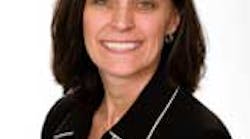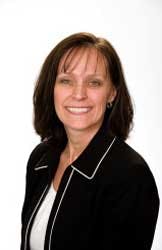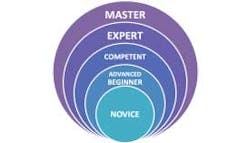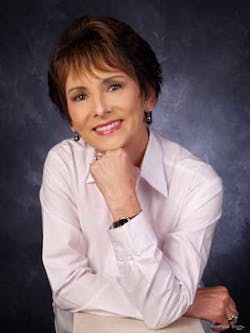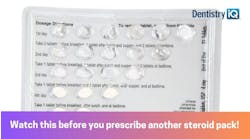By Maria Perno Goldie, RDH, MS
One of the workshops at RDH under One Roof (RDH UOR) was Polishing: A Workshop for the Master Clinician. It was an evidence-based approach to clinical decisions for polishing natural and restored dentition, by Debi Gerger, RDH, MPH, (below left) and Michelle Hurlbutt, RDH, MSDH (below right).
One of the workshops at RDH under One Roof (RDH UOR) was Polishing: A Workshop for the Master Clinician. It was an evidence-based approach to clinical decisions for polishing natural and restored dentition, by Debi Gerger, RDH, MPH, (below left) and Michelle Hurlbutt, RDH, MSDH (below right).
The learning objectives were: • Appraise the scientific literature related to coronal polishing of various natural and restored dental anatomies to provide patient-centered, evidence-based care; • Compare and contrast polishing agents used for plaque and stain removal; • Internalize the importance and significance of esthetic coronal polishing in the dental hygiene care plan; and • Exhibit protective polishing skills through a hands-on peer teaching demonstration with colleague. This interactive hands-on workshop provided the practitioner with polishing skills to move beyond the competent clinician to master clinician. Current scientific information, patient communication, as well as hands-on experience with a new cordless slow speed handpiece device focusing on protective hand and postural ergonomics for musculoskeletal wellness were covered. The course reviewed: protocol for polishing; selection of angles and pastes; cosmetic polishing; and ergonomic considerations.Debi and Michelle introduced the workshop participants to the concept of the Stages of Clinical Competence. This concept/model was developed by a nurse educator, Patricia Benner who for decades has written about how the clinician moves through stages of skill acquisition.(1,2) They asked the participants to think of their own experience with dental hygiene and to rate themselves on where they fell within these stages. Novice: As a novice, the clinician has no clinical experience or expertise. These clinicians are provided rules to follow in order to perform entry level services. All students who entered dental hygiene school began as a novice. Novices do not know what they need to know and are unable to use judgment.
Advanced Beginner: These clinicians demonstrate marginally acceptable performance, but still need supervision and direction by a mentor or instructor. These clinicians have some experience to draw on, but not enough to work on their own. Competent: This is the level that dental hygiene programs strive to graduate their students. The competent dental hygienist has the theory and education surrounding the practice of dental hygiene, but lacks the speed and efficiency that a clinician with more experience possesses. A competent clinician is able to contemplate a problem and establish a plan. Proficient: After a few years of practice, the clinician may achieve a proficient status which is characterized by a more global thought process of seeing situations and problems as a whole rather than in small, detailed parts. Decision making is much easier in this stage as the clinician has 2-3 years of experience in practice and can easily identify what is normal and abnormal in patient care and can modify plans accordingly. Proficient clinicians may still seek advice from mentors or clinical guidelines for more complex situations. Expert: The expert clinician works from a deep understanding and intuitive grasp of each situation presented. They easily identify key problems and solutions and do not rely on guidelines to connect understanding to an appropriate action or plan. They possess highly skilled decision making ability after 5-10 years of experience. Not every dental hygienist becomes an expert clinician. Debi and Michelle proposed that a new level be added, called the master clinician. This clinician possesses consummate and advanced clinical knowledge and skills beyond experience and practice. They have a full command of optimal, evidence-based parameters of dental and dental hygiene care. The master clinician holds outstanding abilities to which others seek advice from and often serves as a mentor.
Advanced Beginner: These clinicians demonstrate marginally acceptable performance, but still need supervision and direction by a mentor or instructor. These clinicians have some experience to draw on, but not enough to work on their own. Competent: This is the level that dental hygiene programs strive to graduate their students. The competent dental hygienist has the theory and education surrounding the practice of dental hygiene, but lacks the speed and efficiency that a clinician with more experience possesses. A competent clinician is able to contemplate a problem and establish a plan. Proficient: After a few years of practice, the clinician may achieve a proficient status which is characterized by a more global thought process of seeing situations and problems as a whole rather than in small, detailed parts. Decision making is much easier in this stage as the clinician has 2-3 years of experience in practice and can easily identify what is normal and abnormal in patient care and can modify plans accordingly. Proficient clinicians may still seek advice from mentors or clinical guidelines for more complex situations. Expert: The expert clinician works from a deep understanding and intuitive grasp of each situation presented. They easily identify key problems and solutions and do not rely on guidelines to connect understanding to an appropriate action or plan. They possess highly skilled decision making ability after 5-10 years of experience. Not every dental hygienist becomes an expert clinician. Debi and Michelle proposed that a new level be added, called the master clinician. This clinician possesses consummate and advanced clinical knowledge and skills beyond experience and practice. They have a full command of optimal, evidence-based parameters of dental and dental hygiene care. The master clinician holds outstanding abilities to which others seek advice from and often serves as a mentor.
Test your skills
1. When removing stain with the polishing cup how much pressure should be applied to the tooth surface?A. Light consistentB. Heavy consistentC. Light intermittentD. Heavy intermittent2. Operator fatigue can be decreased by using which of the following polishing cups?A. SoftB. MediumC. FirmD. Hard3. Static load occurs when muscles are kept tense and motionless thereby reducing blood flow and increasing localized fatigue. Which of the following is critical to reducing static load when performing a polishing procedure? A. Decrease amount of force needed to hold the handpiece B. Hold the same position throughout the procedure C. Extend the arm holding the handpiece D. Bend neck or twist torso to keep neutral hand position4. According to the Nathoo classification system for external dental stain, a Nathoo type 1 (N1) stain is from colored material which binds to the tooth surface. Which of the following chromogen stains is most difficult to remove, often requiring moderate scaling? A. Yellow stain B. Orange stain C. Black stain D. Brown stain5. Which of the following should be used when polishing restorations such as amalgams, composites, gold, and porcelain to reduce abrasion and increase luster? A. Fine pumice slurry B. Aluminum-oxide C. Rubber cups and points such as brownies and greenies D. The polishing agent is determined by the specific restorative materialAccording to Michelle and Debi and the science, tooth polishing is one of the most commonly performed procedures in dentistry, as documented by the estimated 250 million oral prophylaxis performed annually.(3) The dental prophylaxis is one of the most commonly performed procedures in dentistry and dental hygienists spend the bulk of their weekly hours performing oral prophylaxis.(4) The amount of stain present varies per patient and can be classified as intrinsic, extrinsic or a combination of both. There are factors in extrinsic surface staining, such as food, drink, lifestyle habits, poor oral hygiene, and medication. Different types of stain include: brown, black, tobacco, green, yellow, orange, metallic, antiseptic, and other stains.(5,6)The workshop discussed reasons for polishing and selective polishing by use of case studies. They used a cluster map to help facilitate small group discussion. A cluster map is where you write your topic in the center circle and details in the smaller circles, and add circles as needed. For an example, visit www.eduplace.com/graphicorganizer/pdf/cluster.pdf. During the workshop discussion occurred on contraindications to polishing, such as patients with respiratory problems; patients with communicable diseases that can be spread by aerosols; patients who are susceptible to adverse effects of bacteremia; patients who have severe hyposalivation; and areas of dental caries, thinned enamel or cementum (amelogenesis imperfecta, exposed roots, newly planed root surfaces), newly erupted teeth, primary teeth, demineralized (white spot) areas, titanium implants.(7)Different types of prophy paste were discussed including traditional prophy pastes, alternative prophy pastes, and cosmetic pastes. Debi and Michelle highlighted the misconception that fluoride-containing prophy pastes will replenish the fluoride rich reservoir that is removed from the enamel surface during polishing. These pastes will replace a small amount of the fluoride removed during polishing, but they are not equivalent to a topical fluoride treatment nor do they replace all of the fluoride removed. The abrasivity of the pastes were discussed in terms of radioactive dentin abrasivity, also known as relative dentin abrasivity (RDA) was presented, which is a method of measuring the erosive effects of abrasives on dentin.(8) The values depend on size, quantity, and surface structure of the abrasive, and < 250 is an acceptable RDA. Radioactive enamel abrasive, also known as relative enamel abrasive (REA) was also discussed which is a method of measuring the erosive effects of abrasives on dentin.(8) Values depend on size, quantity, and surface structure of the abrasive and a REA < 40 is acceptable. The participants were able to work with the new ZEN cordless prophy handpiece on mounted dental manikens. This handpiece is designed to be more ergonomic, as there is less pinch grip needed due to no cord drag. The handpiece was designed to fit the contours of the hand. It is well balanced and lighter than current hygiene handpieces. The rheostat is wireless as well. For more information about the ZENTM cordless prophy handpiece go to www.discusdental.com/zen.php.Prophy angles and cups were reviewed with respect to angle and cup designs, and tooth polishing technique was discussed and participants were able to practice their skills. Participants learned that before polishing esthetic restorative materials the following considerations should be evaluated: hardness of the esthetic material; hardness of the polishing system to be used; and the physical properties of the material used to deliver the polishing paste or other polishing device. The technique of polishing porcelain, composites, and glass ionomers was reviewed, as well as restorative polishing instruments, brushes and discs. Participants were able to practice polishing techniques on dental manikins. The workshop participants left with increased knowledge and critical thinking skills. This interactive workshop helped participants step back, examine thought processes regarding polishing, and made them more effective clinicians. They challenged assumptions and considered viewpoints and controversies about polishing about with clarity. The big question was: What will you do differently in practice next week? I trust the workshop participants will think very differently about something dental hygienists do daily: polishing! Most importantly, participants grew in their clinical knowledge and skills with the goal of becoming a Master Clinician.Quiz answers
1. C 2. A 3. A 4. C 5. DReferences
1. Benner, P. (1984). From novice to expert: Promoting excellence and power in clinical nursing practice. Menlo Park, CA: Addison-Wesley. 2. Benner, P. (2004). Using the Dreyfus model of skill acquisition to describe and interpret skill acquisition. Bulletin of Science Technology Society, 24, 188-199.3. ADA Report on Services Rendered 2005-2006. 4. Survey of Dental Hygienists in the United States, 2007: Executive Summary, Clinical Services, page 6. Copyright © 2009 by American Dental Hygienists’ Association.5. Hattab FN, Qudeimat MA, al-Rimawi HS. Dental discoloration: An overview. Journal of Esthetic Dentistry. 1999;11(6):291-310.6. Nathoo SA. The chemistry and mechanisms of extrinsic and intrinsic discoloration. Journal of the American Dental Association. 1997 Apr; 128 Suppl: 6S-10S. 7. Wilkins E. Clinical practice of the dental hygienist, 10th edition. Philadelphia, PA: Lippincott, Williams & Wilkins, 2009; 724-739. 8. Stookey G, Schemehorn BR. A method for assessing the relative abrasion of prophylaxis materials. Journal of Dental Research. 1979;58: 588-592.Debi Gerger, RDH, MPH, has a Bachelor of Science degree in Dental Hygiene and Master of Public Health degree in Health Promotion and Education from Loma Linda University and is currently working on her dissertation for a Doctoral of Management degree in Organizational Leadership. Her professional experiences include clinician, educator, facilitator, author, corporate consultant, business owner, associate editor of the California Dental Hygienists’ Association Journal, and she is currently the Dean of Dental Hygiene at West Coast University.Michelle Hurlbutt, RDH, MSDH, is an assistant professor of dental hygiene at Loma Linda University and director for the online BSDH degree completion program. Her career has included private practice, public health, corporate, consulting, association leadership, and dental hygiene education. She has served as president of the California (CDHA) and Nebraska Dental Hygienists' Associations as well as editor of the CDHA Journal. Michelle currently teaches a variety of courses including nutrition, pharmacology, and research as well as practices weekly in a high tech, esthetic dental practice.
1. When removing stain with the polishing cup how much pressure should be applied to the tooth surface?A. Light consistentB. Heavy consistentC. Light intermittentD. Heavy intermittent2. Operator fatigue can be decreased by using which of the following polishing cups?A. SoftB. MediumC. FirmD. Hard3. Static load occurs when muscles are kept tense and motionless thereby reducing blood flow and increasing localized fatigue. Which of the following is critical to reducing static load when performing a polishing procedure? A. Decrease amount of force needed to hold the handpiece B. Hold the same position throughout the procedure C. Extend the arm holding the handpiece D. Bend neck or twist torso to keep neutral hand position4. According to the Nathoo classification system for external dental stain, a Nathoo type 1 (N1) stain is from colored material which binds to the tooth surface. Which of the following chromogen stains is most difficult to remove, often requiring moderate scaling? A. Yellow stain B. Orange stain C. Black stain D. Brown stain5. Which of the following should be used when polishing restorations such as amalgams, composites, gold, and porcelain to reduce abrasion and increase luster? A. Fine pumice slurry B. Aluminum-oxide C. Rubber cups and points such as brownies and greenies D. The polishing agent is determined by the specific restorative materialAccording to Michelle and Debi and the science, tooth polishing is one of the most commonly performed procedures in dentistry, as documented by the estimated 250 million oral prophylaxis performed annually.(3) The dental prophylaxis is one of the most commonly performed procedures in dentistry and dental hygienists spend the bulk of their weekly hours performing oral prophylaxis.(4) The amount of stain present varies per patient and can be classified as intrinsic, extrinsic or a combination of both. There are factors in extrinsic surface staining, such as food, drink, lifestyle habits, poor oral hygiene, and medication. Different types of stain include: brown, black, tobacco, green, yellow, orange, metallic, antiseptic, and other stains.(5,6)The workshop discussed reasons for polishing and selective polishing by use of case studies. They used a cluster map to help facilitate small group discussion. A cluster map is where you write your topic in the center circle and details in the smaller circles, and add circles as needed. For an example, visit www.eduplace.com/graphicorganizer/pdf/cluster.pdf. During the workshop discussion occurred on contraindications to polishing, such as patients with respiratory problems; patients with communicable diseases that can be spread by aerosols; patients who are susceptible to adverse effects of bacteremia; patients who have severe hyposalivation; and areas of dental caries, thinned enamel or cementum (amelogenesis imperfecta, exposed roots, newly planed root surfaces), newly erupted teeth, primary teeth, demineralized (white spot) areas, titanium implants.(7)Different types of prophy paste were discussed including traditional prophy pastes, alternative prophy pastes, and cosmetic pastes. Debi and Michelle highlighted the misconception that fluoride-containing prophy pastes will replenish the fluoride rich reservoir that is removed from the enamel surface during polishing. These pastes will replace a small amount of the fluoride removed during polishing, but they are not equivalent to a topical fluoride treatment nor do they replace all of the fluoride removed. The abrasivity of the pastes were discussed in terms of radioactive dentin abrasivity, also known as relative dentin abrasivity (RDA) was presented, which is a method of measuring the erosive effects of abrasives on dentin.(8) The values depend on size, quantity, and surface structure of the abrasive, and < 250 is an acceptable RDA. Radioactive enamel abrasive, also known as relative enamel abrasive (REA) was also discussed which is a method of measuring the erosive effects of abrasives on dentin.(8) Values depend on size, quantity, and surface structure of the abrasive and a REA < 40 is acceptable. The participants were able to work with the new ZEN cordless prophy handpiece on mounted dental manikens. This handpiece is designed to be more ergonomic, as there is less pinch grip needed due to no cord drag. The handpiece was designed to fit the contours of the hand. It is well balanced and lighter than current hygiene handpieces. The rheostat is wireless as well. For more information about the ZENTM cordless prophy handpiece go to www.discusdental.com/zen.php.Prophy angles and cups were reviewed with respect to angle and cup designs, and tooth polishing technique was discussed and participants were able to practice their skills. Participants learned that before polishing esthetic restorative materials the following considerations should be evaluated: hardness of the esthetic material; hardness of the polishing system to be used; and the physical properties of the material used to deliver the polishing paste or other polishing device. The technique of polishing porcelain, composites, and glass ionomers was reviewed, as well as restorative polishing instruments, brushes and discs. Participants were able to practice polishing techniques on dental manikins. The workshop participants left with increased knowledge and critical thinking skills. This interactive workshop helped participants step back, examine thought processes regarding polishing, and made them more effective clinicians. They challenged assumptions and considered viewpoints and controversies about polishing about with clarity. The big question was: What will you do differently in practice next week? I trust the workshop participants will think very differently about something dental hygienists do daily: polishing! Most importantly, participants grew in their clinical knowledge and skills with the goal of becoming a Master Clinician.Quiz answers
1. C 2. A 3. A 4. C 5. DReferences
1. Benner, P. (1984). From novice to expert: Promoting excellence and power in clinical nursing practice. Menlo Park, CA: Addison-Wesley. 2. Benner, P. (2004). Using the Dreyfus model of skill acquisition to describe and interpret skill acquisition. Bulletin of Science Technology Society, 24, 188-199.3. ADA Report on Services Rendered 2005-2006. 4. Survey of Dental Hygienists in the United States, 2007: Executive Summary, Clinical Services, page 6. Copyright © 2009 by American Dental Hygienists’ Association.5. Hattab FN, Qudeimat MA, al-Rimawi HS. Dental discoloration: An overview. Journal of Esthetic Dentistry. 1999;11(6):291-310.6. Nathoo SA. The chemistry and mechanisms of extrinsic and intrinsic discoloration. Journal of the American Dental Association. 1997 Apr; 128 Suppl: 6S-10S. 7. Wilkins E. Clinical practice of the dental hygienist, 10th edition. Philadelphia, PA: Lippincott, Williams & Wilkins, 2009; 724-739. 8. Stookey G, Schemehorn BR. A method for assessing the relative abrasion of prophylaxis materials. Journal of Dental Research. 1979;58: 588-592.Debi Gerger, RDH, MPH, has a Bachelor of Science degree in Dental Hygiene and Master of Public Health degree in Health Promotion and Education from Loma Linda University and is currently working on her dissertation for a Doctoral of Management degree in Organizational Leadership. Her professional experiences include clinician, educator, facilitator, author, corporate consultant, business owner, associate editor of the California Dental Hygienists’ Association Journal, and she is currently the Dean of Dental Hygiene at West Coast University.Michelle Hurlbutt, RDH, MSDH, is an assistant professor of dental hygiene at Loma Linda University and director for the online BSDH degree completion program. Her career has included private practice, public health, corporate, consulting, association leadership, and dental hygiene education. She has served as president of the California (CDHA) and Nebraska Dental Hygienists' Associations as well as editor of the CDHA Journal. Michelle currently teaches a variety of courses including nutrition, pharmacology, and research as well as practices weekly in a high tech, esthetic dental practice.
Maria Perno Goldie, RDH, MS
To read previous articles in RDH eVillage FOCUS from 2011 written by Maria Perno Goldie, go to articles.
